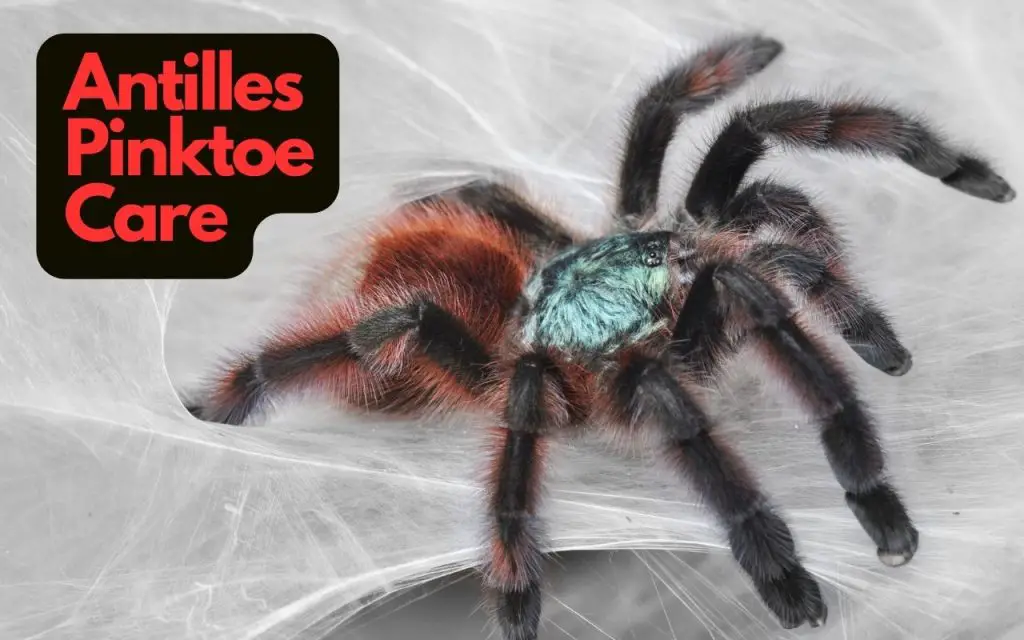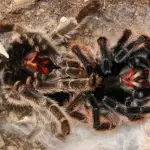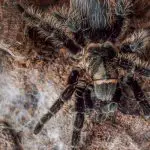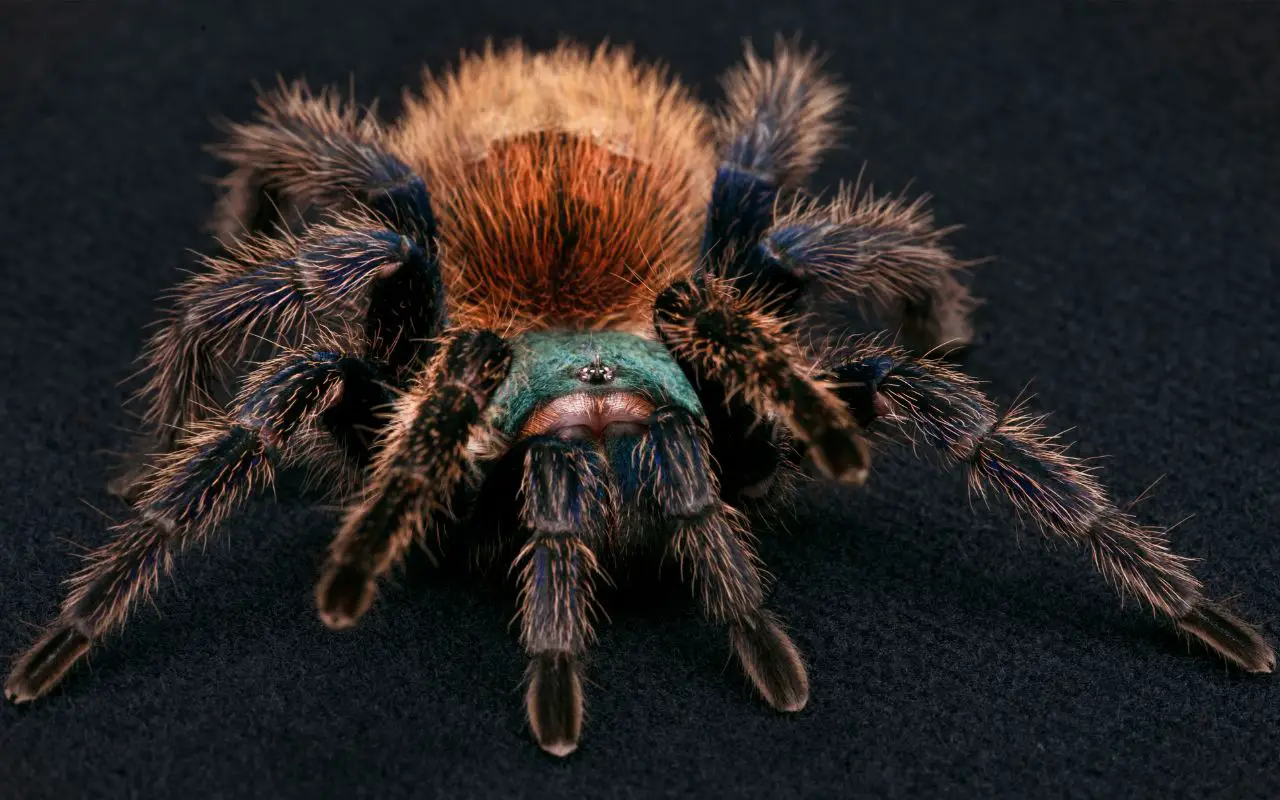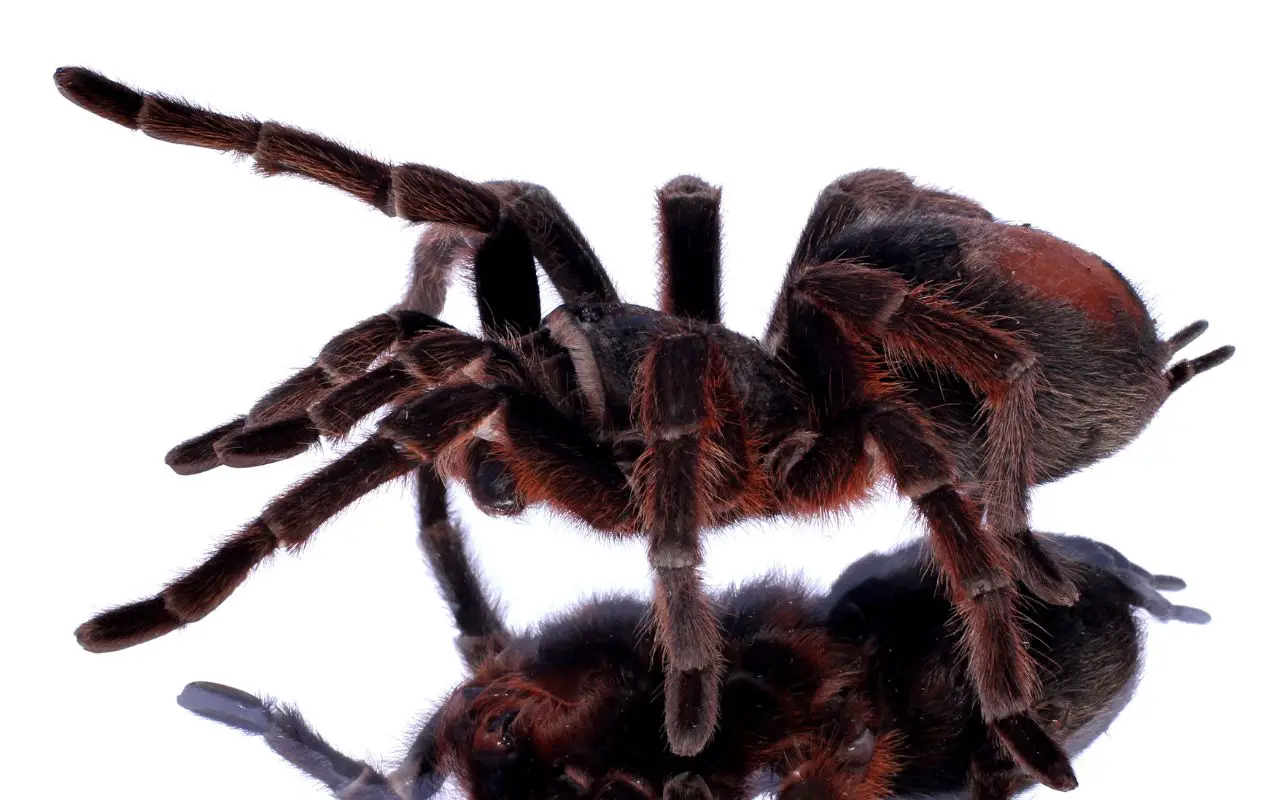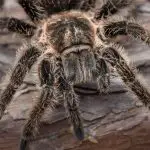As a seasoned tarantula keeper, I’ve immersed myself in the fascinating world of these captivating creatures, discovering their unique traits, habits, and care requirements. Today, I’m excited to share my comprehensive insights and experiences about one of the most stunning tarantula species I’ve had the pleasure to care for: the Antilles Pinktoe Tarantula (Caribena versicolor).
The Antilles Pinktoe Tarantula, also known as the Martinique Red Tree Spider or the Martinique Pinktoe, is native to Martinique in the Caribbean Sea. Sporting a vibrant array of colorations, ranging from metallic green-blue to striking red-pink, this arboreal species truly stands out in the world of tarantulas.
Creating the Ideal Habitat: An Enclosure Suited to the Antilles Pinktoe Tarantula
Being an arboreal species, the Antilles Pinktoe Tarantula appreciates vertical space for climbing and webbing. This unique preference necessitates an enclosure that is taller rather than wider. I’ve discovered that an enclosure measuring roughly 20 inches in height and around 10 inches in width and depth tends to work well for adult tarantulas.
While setting up a home for my Antilles Pinktoe Tarantula, I’ve learned the importance of including specific elements that cater to their arboreal nature:
- Vertical space: Being tree-dwellers, these tarantulas require a good height to explore, climb, and build their webs.
- Substrate: I usually add a layer of coconut fiber, which serves a dual purpose: it aids in maintaining humidity and gives the enclosure a natural, earthy look.
- Climbing structures: Vertically inclined branches or pieces of cork bark mimic the tarantula’s natural environment, promoting their inherent climbing behavior.
- Hide: Adding an arboreal hide, ideally attached to one of the branches, ensures your tarantula has a secure place for retreat, especially during molting periods.
- Water dish: A shallow water dish not only helps maintain humidity but also keeps your tarantula hydrated.
Perfecting the Climate: The Importance of Temperature and Humidity
Maintaining the right temperature and humidity levels is a critical aspect of Antilles Pinktoe Tarantula care. These tarantulas thrive in a temperature range of 75-80°F and prefer a relative humidity of around 70-80%. To prevent mold, I always ensure my tarantula’s enclosure is well-ventilated.
Here’s my comprehensive weekly routine for temperature and humidity management:
- Daily misting: I lightly mist the enclosure daily, either in the morning or evening, to maintain the right humidity level.
- Ventilation: The enclosure I use has ample ventilation to prevent stuffiness and ward off mold growth.
- Temperature checks: I make it a point to keep the enclosure in a warm area away from direct sunlight and drafts, checking temperature levels daily.
- Hygrometer and thermometer: I use these tools to keep a track of the humidity and temperature, conducting a thorough check at the end of each week.
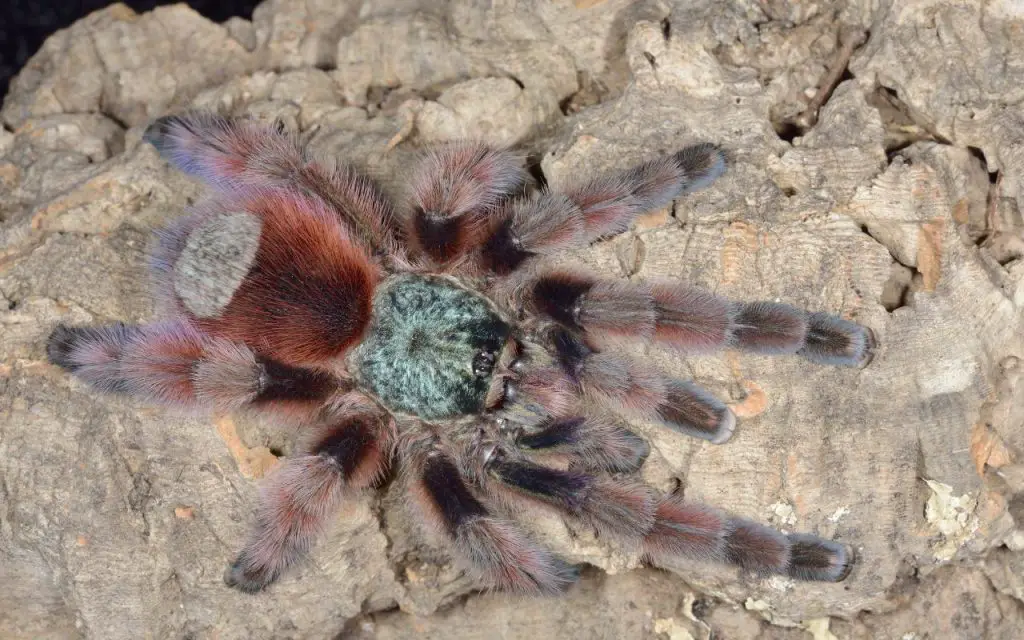
Feeding Schedule
Antilles Pinktoe Tarantulas are carnivorous, primarily feeding on a variety of live insects. Crickets, roaches, and mealworms have been successful dietary staples in my experience. With my adult tarantula, I follow a feeding schedule of once a week, which seems to keep her satisfied.
Note: This species doesn’t hunt on the ground! Try giving it crickets, because they can climb, or placing food in its webbing located near its favorite hiding place.
Here’s a more detailed look into my feeding routine:
- Weekly feeding: I offer my tarantula a couple of crickets or a single roach suitable to her size.
- Follow-up: After feeding, I keep an eye on the enclosure to ensure my tarantula has accepted the food. Any uneaten food is removed within 24 hours to prevent mites and foul odors.
- Hydration: I always ensure the water dish is clean and filled with fresh water, even on non-feeding days.
Handling and Interaction: The Dos and Don’ts
The Antilles Pinktoe Tarantula, despite being relatively docile, should not be handled frequently. Excessive handling can stress these creatures, and their agility increases the risk of escape or fall.
When handling is necessary, it’s done with utmost care, keeping the tarantula’s comfort as a priority. Like its close relatives in the Avicularia genus, the Antilles Pinktoe has a slender build, that may make it more prone to injury if dropped.
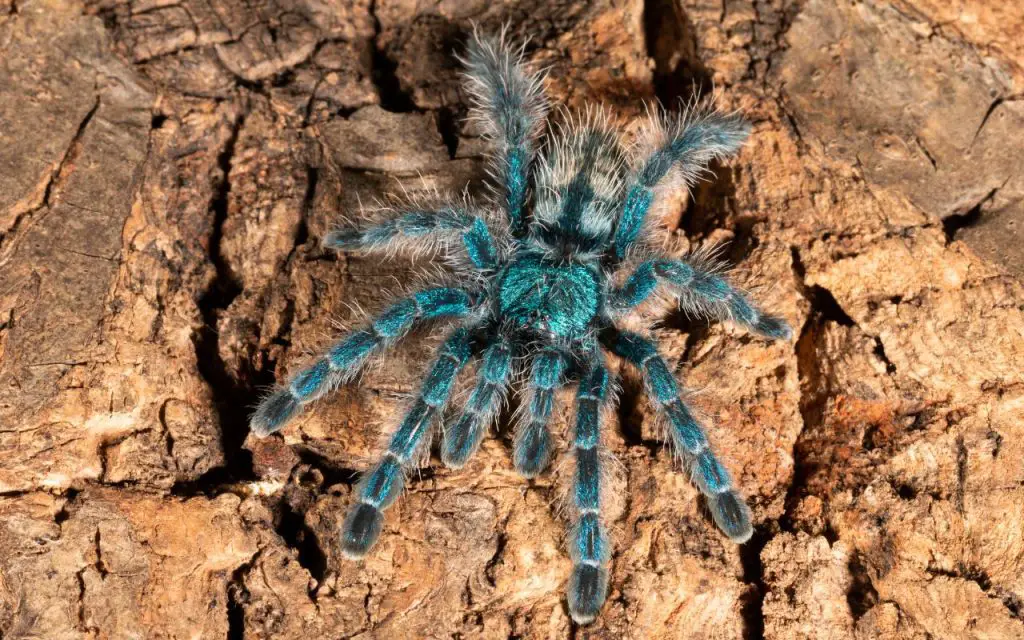
The Molting Phase
Molting is an integral part of a tarantula’s growth. During this phase, the Antilles Pinktoe Tarantula tends to hide and often refuses food. It’s vital to provide enough humidity during this time and refrain from any handling to ensure a successful molt.
Final thoughts on Antilles Pinktoe Tarantula Care
Why I like this species:
- This tarantula is spectacular to look at. Of all the South American “Bird-eating” Spiders, this is one of the brightest, and most colorful.
- It is a gentle species, and you don’t risk a painful bite when re-homing it.
Things to consider before buying:
- Though it’s gentle, it is a little delicate for regular handling
- It needs an arboreal enclosure to thrive
- It needs both high humidity, and good ventilation
Owning an Antilles Pinktoe Tarantula has been a remarkable journey that has enriched my knowledge and love for tarantulas. Their unique habits, coupled with their striking appearance, make them an unforgettable species to keep.
In sharing this comprehensive care guide, my hope is that it will aid you in providing the best care for your Antilles Pinktoe Tarantula. Remember, keeping a tarantula is not just about feeding and housing them; it’s about understanding their needs, respecting their behaviors, and fostering an environment where they can thrive.
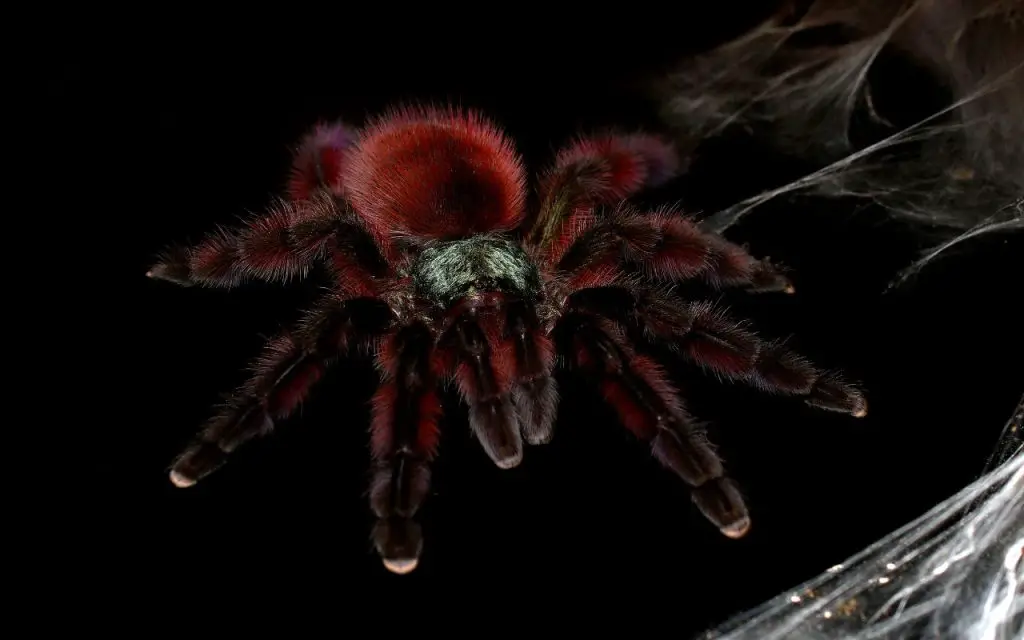
How big does Caribena versicolor get?
Caribena versicolor is a medium-sized arboreal spider that generally reaches roughly 5inches (12cm) in legspan. They grow at a medium rate, and females may reach full size at 4 years of age. As with most tarantulas, males tend to be slightly smaller and slimmer than females. Some males only reach a leg span of 3.5inches (9cm), in fact.
How long do Antilles Pinktoe Tarantulas live?
These tarantulas do not live anywhere near as long as most other species. Whereas some species in the Brachypelma genus might reach 25 years of age, Caribena versicolor almost always lives around 8 to 10 years in total. Why this might be is still unclear. That said, compared to other small pets, I think 10 years is still a great lifespan!

